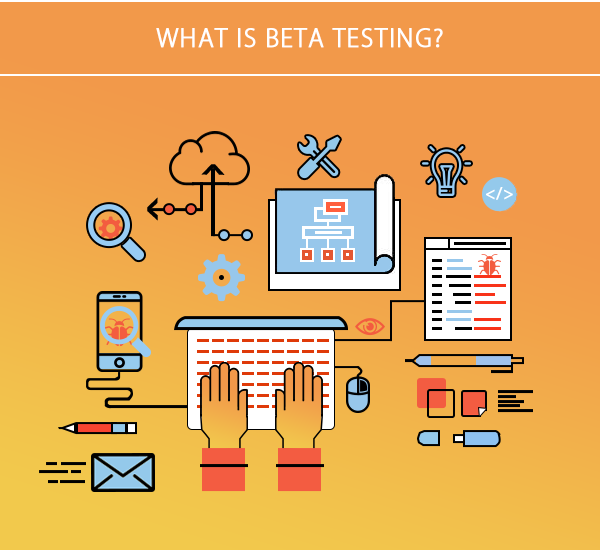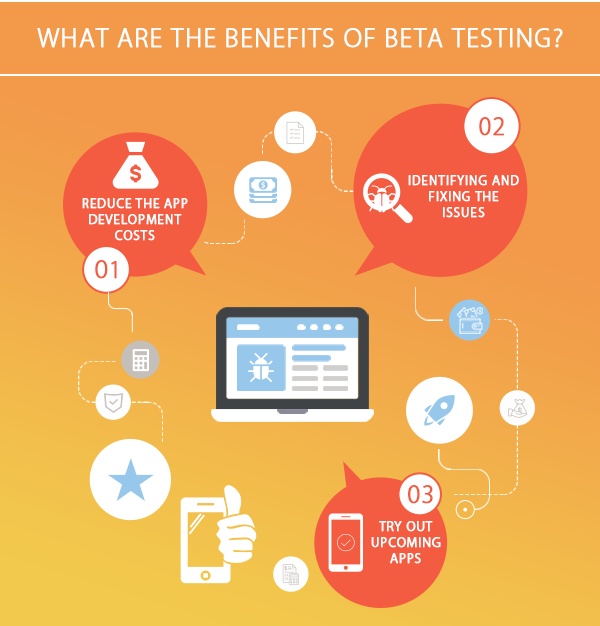The right method for app developers to do beta testing
If you are a mobile app developer, you might know how important it is to test the app before releasing it in the market. You need to make sure that you get rid of all the hidden bugs before it hit the store. The only way to make your app really work is ‘Beta Testing’, which is the secret behind giving the best quality apps. However, you need to choose the right method to do beta testing.
Beta testing is an important stage of mobile app development that guarantees the best user experience by making sure that the app works well on all the devices. It is important to know how well the user interacts with your app. For this, you need to use the best and most efficient way to beta test your app.
What is beta testing?
Best testing is the secret behind the quality of reputed and successful mobile apps. It is the fine test that is carried out in a controlled environment. However, this kind of test doesn’t show up hidden bugs that appear only when used on real devices. During beta testing, the app goes through a rigorous in-house testing process that is conducted by a team of expert developers with the aim of fixing bugs and glitches.
Beta testers use your app for a specific period of time and report back the issues and provide feedback about the app. This helps developers to validate the ideas faster and confirm the app is heading in the right direction.
What are the benefits of beta testing?
Beta testing gives users an early access to a new app. It also provides startup founders and product managers with an opportunity to identify problems that weren’t caught during alpha testing.
Identifying and fixing the issues during beta testing can reduce the app development costs significantly. Additionally, you can avoid potential PR crisis that is associated with bad public launch.
Best testing also provides customer validation and provides startup companies with feedback regarding where to include specific features.
How to choose the right method to create successful Beta test?
Constructing a meaningful and strategic beta test involves a lot of planning, including – scooping targeted testing devices, choosing the right segment of users to test your product, deciding the distribution model and many more. Developers can choose the right model by focusing on the above components individually.
1. Choose the targeted platforms
First you need to choose the targeted platforms that you are going to include in the beta test. This is guided by the technical specifications you and you team are going to set out of the development phase. For mobile apps, the variations could include -Device iterations (such as – iPhone 6S Plus, iPhone 6S etc) and Operating System Iterations (such as – Android, iOS etc).
Android has dozens of screen sizes and devices along with multiple processor speeds. The sheer range of combination means it is feasible to dedicate enough time to test all the variants. If you approach beta testing as iterative process, your sample size will be increased and new insights will be discovered.
If you already a team of existing users, you can match the test sample proportionally to the distribution of devices and OS versions they are using. For those who are developing iOS app, Apple recommends designing the app for all the available screen sizes. It is wise to include in your test all the devices released in the last two years.
2. Selecting Beta Testers
Once you have decided which operating system and device you want to support, you should ensure that the beta testing candidates match those platforms. It is important to note that choosing beta tester should not be based solely on whether they have compatible technology. They should be keen to use the software too. There is no sense in choosing beta testers who are not interested in your app, before it is available for general public.
If you already have a team of beta testers, you can send individual invites by finding specific users who matches the platforms you want to test. You might also want to find sample of users who are willing to download your app, but aren’t active users. This will help you know how the users feel when a new feature is introduced in the app.
If you are working on the app — prior to the launch and don’t have existing users, you can seek out beta testers from a variety of services such as –UserTesting, ErliBird, etc. These services provides portal for users to test your app and receive analytics along with feedback from real-users.
How to distribute your Beta?
There are different tools available for iOS and Android developers to distribute the beta version of app to your beta testers and their devices. You can chose tools like – TestFlight, HockeyApp, and Google Play Developer Console etc to distribute your Beta.
TestFlight, acquired by Apple is integrated into Xcode platform to make the task of inviting external users to test your app. The testers will receive an email asking them to join your beta testing group.
HockeyApp is another beta distribution tool that provides a lot of automatic tools that TestFlight lacks.
Google Play Developer Console not only allows you to distribute to beta testing groups, but alpha testing also. The testers will receive a link to subscribe and will receive future beta release versions of the app automatically.
How to study your Beta testers?
Once the beta version is distributed to the testing groups, you need to use correct mechanism to acquire and analyze feedback from the testers. The two most popular mechanisms include – explicit feedback and implicit feedback.
- Explicit Feedback
Explicit feedback refers to the mechanism that receives feedback from the users via email or a message within the app. The users should be encouraged to provide feedback on how intuitive the app is to use, as well as any bugs they have discovered.
If you are using Apple’s TestFlight, developers should specify the set of instructions explaining what to cover during testing. Users can send feedback using TestFlight mobile app. Though this mechanism is good to receive feedback, it is beneficial to implement sophisticated feedback methods – such as having a button directly within the app.
Implicit feedback
This feedback can be used by the beta testers to refer crash reports and use of analytics. You can use Crashlytics to observe the app crashes through crash logs. This prominent service is a part of twitter that provides a lot more than just a stack trace along with an easy to read crash item. This tool aggregates crashes by source issue that seems to cause the same type of crash.
Apple also provides crash report via Xcode integrated crash reporting tool that provides technical insights into crashes.Implicit feedback falls under the category of analytics, in terms of usability testing.
Besides the above tools, Parse Analytics is another tool that allows custom event tracking. Using this tool, you can send specific calls to track when certain screens/buttons are accessed.
Regardless of the service you utilize, it is important to track the funnels of user action. This help startup managers and founders to understand if any particular feature/functionality is over-used or under-used.
Wrapping up!
Beta testing is one of the essential aspects of product development cycle. If you want to do beta testing successfully, you should pay attention to various components, such as – selecting targeted platform, selecting beta testers, studying the feedback and so on.
Here we have defined different tools that can be used to distribute the app and solicit explicit/implicit feedback from beta testers. Beta testing won’t have any meaning unless you get precise information on crashes and glitches.
Why late? Gain insight into which screens are under-used and over-used by doing beta testing using the above method.
Still have your concerns?
Your concerns are legit, and we know how to deal with them. Hook us up for a discussion, no strings attached, and we will show how we can add value to your operations!


